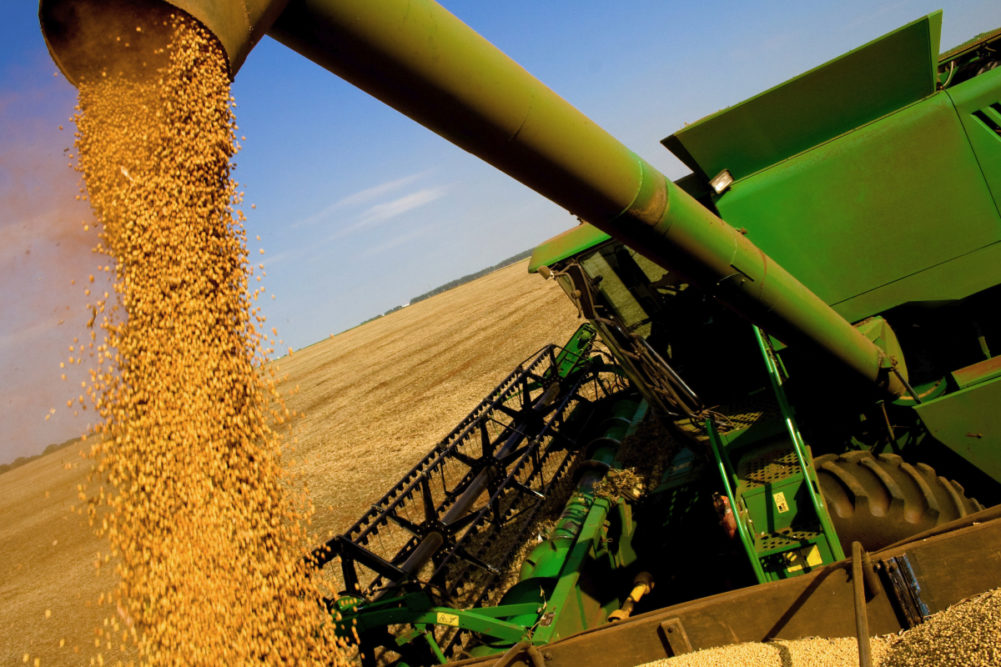LONDON, ENGLAND – Oilseed markets continue a bearish trend as high production in many exporting countries outweighs the effect of war on major sunflower producer Ukraine.
The United Nations Food and Agriculture Organization (FAO) in its biannual Food Outlook report, published on Nov. 11, pointed out that the world production of oilseeds in 2022-23 is “forecast to rebound from the previous season to an all-time high, primarily driven by expected output recoveries of soybean and rapeseed, which more than offset a likely drop in sunflower seed production.”
The FAO forecast total production 7% higher at 654.5 million tonnes.
“The anticipated record world soybean production is chiefly underpinned by a markedly higher output expected in Brazil, assuming normal weather conditions, whereas the crop in the United States of America could fall slightly because of lower yields,” the Rome, Italy-based organization said. “International rapeseed production is predicted to rise sizably, thanks to favorable outlooks across Australia, Canada and the European Union.”
However, it expected to see a fall in world sunflower seed production “as the war in Ukraine has disrupted sowing activities significantly, while yields are also expected to fall as a result of shortages of inputs,” but forecast a modest rise in palm oil output, “as lingering labor shortage issues in Malaysia continue to constrain the potential for a higher growth rate.”
A few days earlier, in its Food Price Index, which was published on Nov. 4, the FAO put the month-on-month fall in oilseeds prices at 1.6% in October 2022, bringing the level to nearly 20% below where it was in October 2021.
“The continued decrease of the index was driven by world lower prices of palm, soy and rapeseed oils, which more than offset higher sunflowerseed oil quotations,” the FAO said. “In October, international palm oil prices declined slightly from the previous month, broadly weighed by lingering heavy stock levels in Southeast Asia, despite concerns over unfavorable weather prospects in pockets of major growing regions. Meanwhile, world soy and rapeseed oil quotations dropped on outlooks of ample supplies in the coming months.”
By contrast, international sunflower oil prices rebounded moderately after falling continuously over the past six months due to uncertainty over the future of the export corridor in Ukraine amid rising geopolitical tensions.
The International Grains Council (IGC), in its Grain Market Report of Oct. 20, reported that for soybeans “declines in the US and Brazil amid pressure from bearish fundamentals and weaker external markets,” had triggered a month-on-month fall in its price index of 1%. It also noted a 6% fall in nearby Chicago soybean futures, “as seasonal harvest pressure, coupled with deepening worries about the global economy — and associated movements in outside markets — weighed.”
“While cumulative US export commitments were still modestly ahead of a year earlier in early October, heightened worries about future buying interest from China added to pressure, especially in view of a potentially sizeable Brazilian surplus coming to the market in early 2023,” the IGC said. “Spot export values in Argentina and Brazil were steady to softer during October, albeit with cautious farmer sales providing some support, thereby limiting downside.”
On rapeseed, the IGC reported that “despite pressure from increasing new crop Canadian supplies, ICE canola spot futures advanced by 8% month-on-month as worries surrounding final yields underpinned, with strength in vegetable oils adding support at times.”
Chris Lyddon is World Grain’s European correspondent. He may be contacted at: [email protected].






